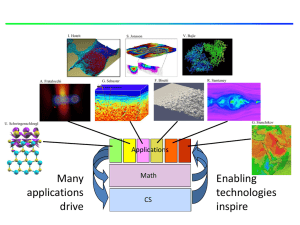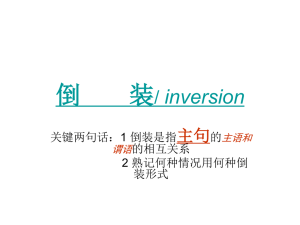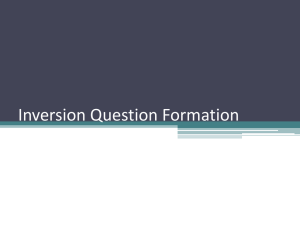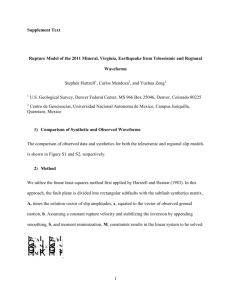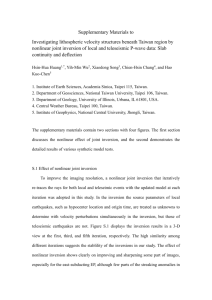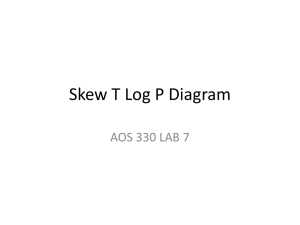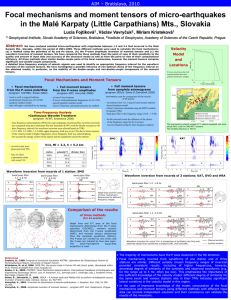MS Word
advertisement
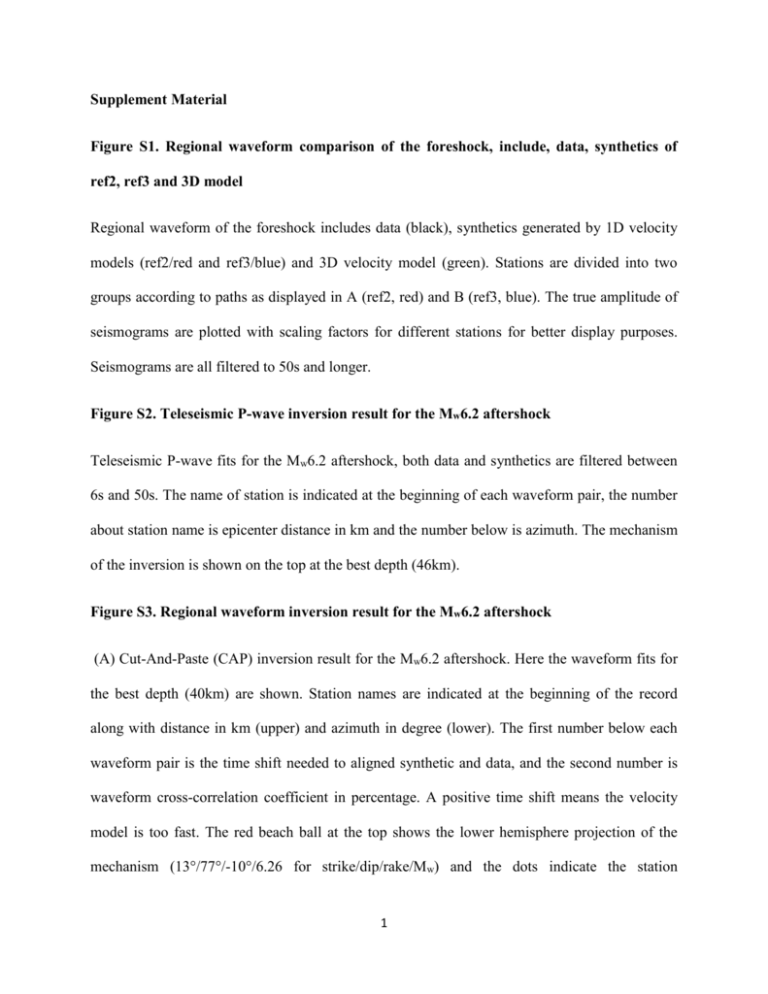
Supplement Material Figure S1. Regional waveform comparison of the foreshock, include, data, synthetics of ref2, ref3 and 3D model Regional waveform of the foreshock includes data (black), synthetics generated by 1D velocity models (ref2/red and ref3/blue) and 3D velocity model (green). Stations are divided into two groups according to paths as displayed in A (ref2, red) and B (ref3, blue). The true amplitude of seismograms are plotted with scaling factors for different stations for better display purposes. Seismograms are all filtered to 50s and longer. Figure S2. Teleseismic P-wave inversion result for the Mw6.2 aftershock Teleseismic P-wave fits for the Mw6.2 aftershock, both data and synthetics are filtered between 6s and 50s. The name of station is indicated at the beginning of each waveform pair, the number about station name is epicenter distance in km and the number below is azimuth. The mechanism of the inversion is shown on the top at the best depth (46km). Figure S3. Regional waveform inversion result for the Mw6.2 aftershock (A) Cut-And-Paste (CAP) inversion result for the Mw6.2 aftershock. Here the waveform fits for the best depth (40km) are shown. Station names are indicated at the beginning of the record along with distance in km (upper) and azimuth in degree (lower). The first number below each waveform pair is the time shift needed to aligned synthetic and data, and the second number is waveform cross-correlation coefficient in percentage. A positive time shift means the velocity model is too fast. The red beach ball at the top shows the lower hemisphere projection of the mechanism (13°/77°/-10°/6.26 for strike/dip/rake/Mw) and the dots indicate the station 1 projections on the lower hemisphere, each according to its first arrival P wave take-off angle. (B) Depth resolution of the inversion. Figure S4. Depth resolution of regional data Sensitivity tests for source depth on three regional stations. The three component velocity synthetics (red) are generated at different depth and compared with the data (black), both filtered to 50s and longer. As an example, the Pnl wave and surface wave windows are indicated in the radial component record section at station PSI. Note the different sensitivities between Pnl waves, Rayleigh waves and Love waves. Figure S5. Checker-board tests Checker-board like slip models with different asperity dimensions (A,B) are used to generate synthetic data and then inverted by the inversion setup we use for the real data. The inverted slip models are presented in C and D, respectively. Figure S6. Smoothness factor for joint inversion Weighted errors are plotted against smoothness coefficients for the joint inversion of regional and teleseismic data. There is not much change in error when smoothness coefficient is less than 0.03. Figure S7. Decomposition of regional waveform fits Decomposition of regional synthetics (gray) into the contribution of segment F1 (brown), F2 (red) and F3 (green). 2 Figure S8. Slip model on F1 and F2 for regional only inversion, teleseismic only inversion and Joint inversion Depth profiles of slip models for the regional only inversion (upper), teleseismic only inversion (middle) and joint inversion (lower). Here we only display segment F1 and F2. Figure S9. Representative teleseismic P-wave fits from regional data only model and teleseismic only model Selected teleseismic P-wave fits, (A) prediction from regional data only inversion, (B) teleseismic only inversion. Data are displayed in black and synthetics are in red, station name is indicated at the beginning of each trace with epicenter distance in degree (lower) and azimuth (upper). Maximum amplitude of data in micro-meter is shown at the end of the seismogram. Figure S10. Decomposition of teleseismic waveform fits Decomposition of teleseismic synthetics (gray) into the contribution of fault segment F1 (brown), F2 (red) and F3 (green). The SH components with broader waveform are high-lighted in the box. Animation 1. Inversion process of the Mw8.6 mainshock The slip distribution on fault segment F1 (top), F2 (middle) and F3 (bottom) are displayed from the beginning of the iteration of simulated annealing inversion. Animation 2. Inversion process of the Mw8.2 aftershock Similar as Animation 1 for the Mw8.2 aftershock. 3

